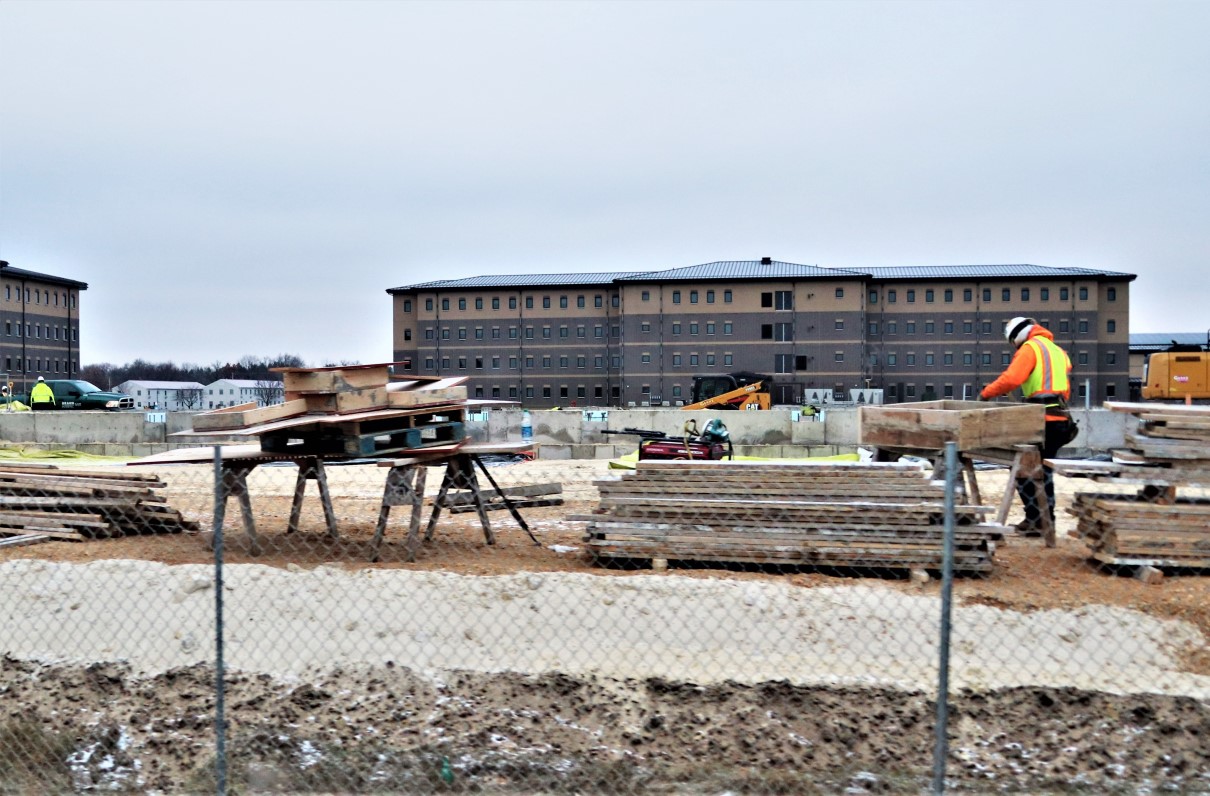Editor’s note: This article by Rebecca Kheel originally appeared on Military.com, a leading source of news for the military and veteran community.
Lawmakers have promised that 2024 will see a major focus on military quality-of-life issues, including persistent problems with crumbling, unhealthy barracks.
But efforts to replace dilapidated housing and improve service members' quality of life could be kneecapped before they can even get off the ground by political fighting over the federal budget.
[TAKE ACTION: Urge Your Lawmakers to Pass a Budget]
Congress is starting this year with a leftover battle over spending levels for the rest of the fiscal year, which began in October. Lawmakers, whose holiday break goes until next week, are now facing two fast-approaching deadlines to reach a spending deal or else cause government agencies to shut down.
The first deadline, which covers funding for the Department of Veterans Affairs and military construction, is Jan. 19. The next deadline, which encompasses the rest of the Pentagon budget, is Feb. 2.
House Speaker Mike Johnson, R-La., has vowed not to pass any more short-term spending patches after the Feb. 2 deadline, raising the prospect of a full-year continuing resolution, or CR, if a deal on regular spending bills isn't reached.
CRs extend the previous year's funding levels with no changes and prevent any new programs from starting. The military has never had to live under a full-year CR, and officials have warned in past years that the effects of one could be devastating.
[TAKE ACTION: Ask Your Lawmakers to Pay Servicemembers During a Government Shutdown]
Adding a wrinkle to the debate over a full-year CR this time, a deal reached last year to avert a government default mandates a 1% across-the-board spending cut to every federal agency if a regular spending plan isn't passed by the end of April.
Military officials have warned that a full-year CR, coupled with a 1% cut, would cripple efforts to improve service members' quality of life, including plans to fix and replace barracks that have made headlines in recent months for their disgusting conditions.
"Military construction projects cannot begin under a CR, so the Army would have to delay initiation of 35 projects, including five barracks and four family housing projects precisely at a time when we are working hard to improve our aging barracks," Army Secretary Christine Wormuth wrote in a letter to the Senate Appropriations Committee last month.
The letter did not specify which barracks projects would be delayed.
[TAKE ACTION: Urge Your Lawmakers to Improve Quality of Life for Our Servicemembers]
Any delays could stymie plans by the Army, which owns the majority of barracks in the military, to invest billions in fixing and replacing the housing after media and government watchdog reports detailed squalid living conditions across the military, including rampant mold, insect infestations and overflowing sewage.
The congressional gridlock is threatening barracks and other quality-of-life initiatives at a time when lawmakers have vowed to make service members' living conditions a priority and enact potentially sweeping reforms.
The House Armed Services Committee's quality-of-life panel has said it plans to produce recommendations early this year that could be included in the annual defense policy bill lawmakers will debate later in 2024.
One of the key areas the quality-of-life panel is expected to tackle is housing conditions following the reports of decrepit barracks. Any reforms would be targeted for fiscal year 2025 at the earliest. But if a yearlong CR punts planned repairs this year, the panel could face a bigger hole to dig out of next year.
Wormuth's letter singling out the effects on barracks was among a series of letters from the service secretaries, Defense Secretary Lloyd Austin and Chairman of the Joint Chiefs of Staff Gen. Charles "C.Q." Brown that were solicited and released last month by Senate appropriators about the effects of a full-year CR on the military. Brown's letter similarly warned about military construction delays.
In the Air Force and Space Force, 34 military construction projects total, including some "quality-of-life facilities," would be delayed, Air Force Secretary Frank Kendall wrote. In the Navy and Marine Corps, "quality-of-service initiatives to improve living conditions and expand resources for mental health will be blunted," Navy Secretary Carlos Del Toro warned.
[RELATED: Could the All-Volunteer Force Withstand a Full Year Without a Budget?]
A full-year CR would actually leave the military with more construction money than it had planned for this year. But because a CR doesn't allow new projects to start, that money would be "essentially unusable," Austin said in his letter.
Across the military, 21 quality-of-life facilities worth $1.5 billion would be delayed, including new barracks at Joint Base Lewis-McCord in Washington state and a new ambulatory care and dental clinic at Marine Corps Air Station Miramar in California, Austin wrote.
"A year-long CR," Austin wrote, "would misalign billions of dollars, subject service members and their families to unnecessary stress, damage our readiness, and impede our ability to react to emergent events."
Support Military Spouses
Donate to The MOAA Foundation and support MOAA’s efforts to help military spouses in their career journeys.
